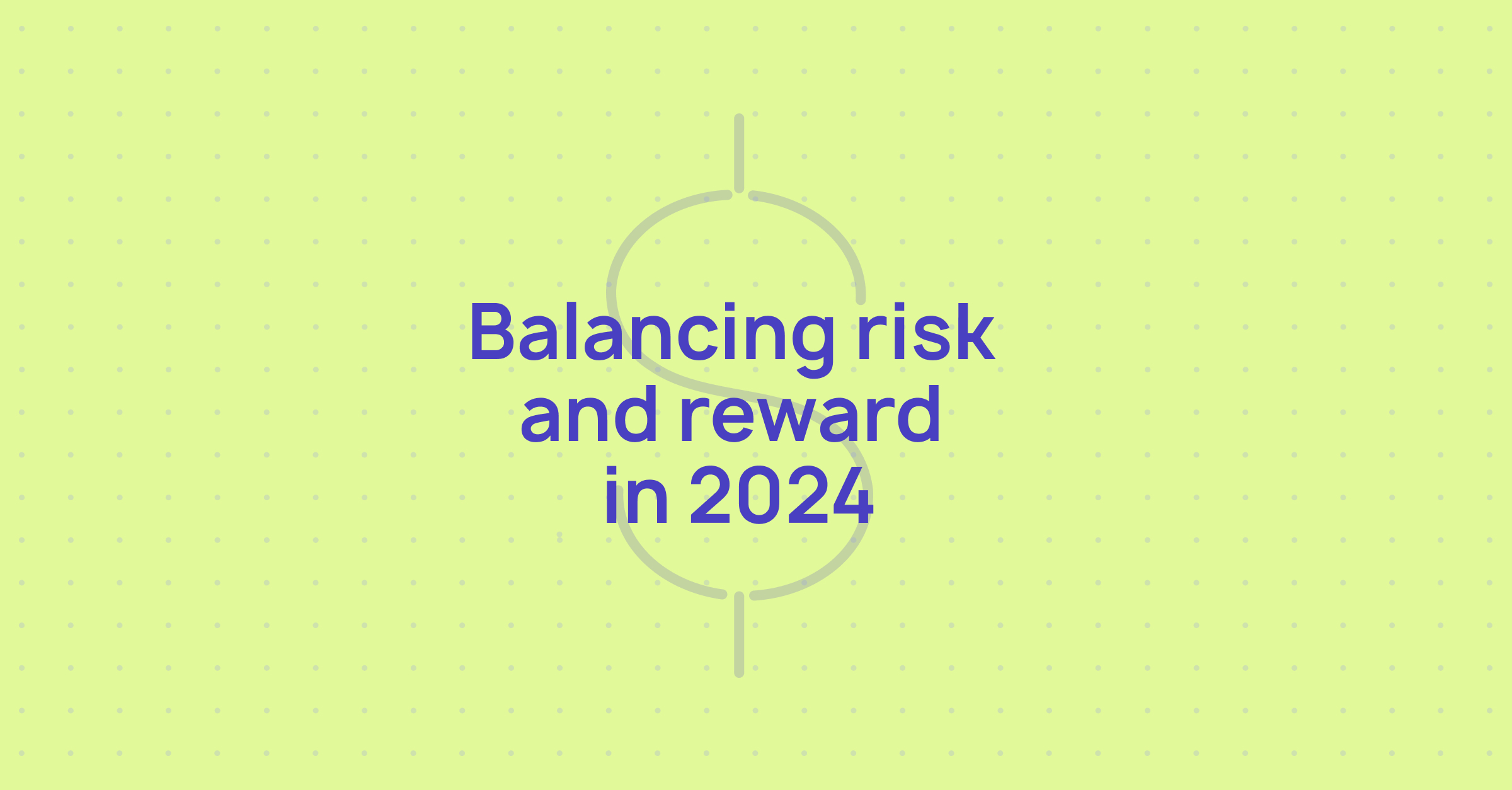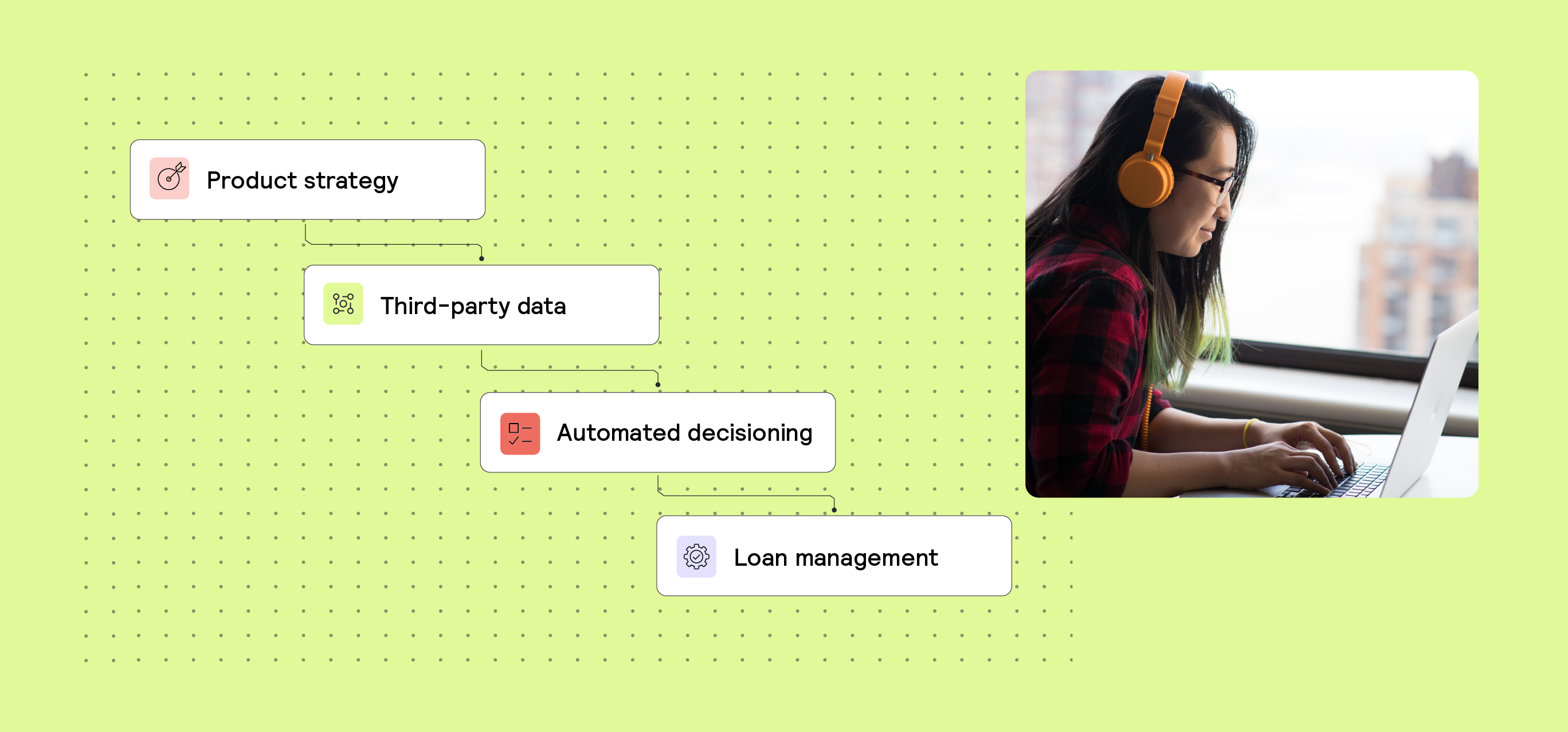
As finance professionals, lenders, and decision-makers in the lending industry, your role in balancing the risk and return dynamics of a lending portfolio is crucial. However, the challenges and opportunities of doing so have shifted significantly in the past few years, with this year being no exception.
As we progress further into 2024, it's evident that a range of emerging trends and strategies are defining the landscape for lenders. This article offers an overview of these developments, drawing on our firsthand experiences working with market-leading lenders on the front lines.
The status quo
Demand for convenient lending products remains at an all-time high
After enduring over 2 years of a high-inflation economy, consumer and business demand for fast, accessible loan products has skyrocketed.
Thanks to their easily embeddable nature, BNPL offerings in commerce have never been more prevalent. Among the B2C segment, BNPL has become the preferred instant payment method for many, with 70% of consumers from the ages of 18-24 having used it. This signals that the demand for loan products is quickly expanding not just across existing highly-served consumer segments but also into much younger demographics.
In the B2B realm, financial products across the board have undergone rapid evolution as fintech companies harness novel data sources and unique underwriting techniques. In 2024 alone, pioneering B2B lenders are witnessing remarkable growth as they extend their services to meet the evergrowing demand of the underserved, ranging from SMEs to entrepreneurs.
But interest rates haven’t let up quite yet
Although demand may be at all-time highs, as recently signaled by the Federal Reserve, interest rates are likely to remain higher for longer. For lenders, this puts significant pressure on the cost of capital and squeezes, often already very squeezed, net interest margins.
In a Taktile survey of lenders worldwide, 67% reported being negatively affected by increasing capital costs and, consequently, have significant room for improvement across several key performance indicators, such as conversion and default rates plus portfolio growth rates.
This raises a critical question: How can lenders sustainably and profitably meet the increasing demand for loans?
After collaborating closely with fintechs worldwide, we have identified a transformative approach that is fueling growth in this dynamic lending environment: shifting risk from a cost center to a profit center.
To achieve this, we have pinpointed four key underwriting strategies that forward-thinking lenders are using to optimize the balance between risk and return:
1. Treat data as king and orchestration as supreme
It’s no secret that new alternative data sources are the key to unlocking some serious growth opportunities in lending. Let data guide you on what pockets of growth you may have available across your products and geographies.
Open banking data, for example, has helped lenders significantly increase their approval rates and reduce defaults by accurately underwriting the risk of applicants—especially those considered thin-file or credit-invisible. In B2B lending, fintechs are leveraging the powerful combination of open banking data plus accounting data to effectively serve the small business segment.
However, accessing transformative data sources is just the beginning. Sophisticated lenders possess the capability to instantly connect with these data sources and integrate them seamlessly into their overall risk decision process. Crucially, they achieve this integration in a cost-effective manner.
As explained by Seema Amble, Partner at Andreessen Horowitz, “With the backdrop of a challenging macro environment, growth alone cannot win the market. Lenders who can improve unit economics, focus on efficiency, and improve decision accuracy can capitalize on these challenges and build a competitive moat in this market.”
Eliminating the financial and resource constraints associated with integrating and maintaining API connections to data sources can significantly enhance your bottom line. Furthermore, the ability to effortlessly design segmented onboarding and credit decision flows—where external data is only pulled for applicants requiring more thorough assessments (thereby introducing necessary friction)—can significantly reduce customer acquisition costs.
2. Optimize policy thresholds often and rapidly
From a pricing perspective, good heuristics and rules design will always remain the secret sauce to differentiating yourself in a sea of lending products. But in today’s environment, lenders can no longer rely on “set-and-forget” credit policy logic to remain competitive.
Undertaking frequent, data-driven policy iteration through backtesting and A/B testing can significantly improve key performance metrics, such as default and approval rates.
In a Taktile survey, we found that lenders who make credit policy changes the fastest and are the most proactive in adjusting their risk selection tend to be the closest to achieving their performance goals. However, to do this, the subject matter experts in credit and risk teams need to be able to own the policy experimentation and adjustment process end-to-end.
3. Automate risk decisions beyond customer onboarding
Decision automation can not only enable scalable growth from a customer onboarding perspective, but it can also be a highly effective tool for ongoing portfolio monitoring to uncover new revenue opportunities from an existing customer base.
For example, lenders can proactively identify when a customer might benefit from additional financial products or an adjustment in their loan terms based on real-time changes in their financial situation or behavior. This approach not only fosters loyalty by showing customers that their lender understands and anticipates their needs but also opens new avenues for cross-selling and upselling products.
For example, periodically undertaking automated portfolio rescoring can ensure that you not only reduce your exposure to unforeseen repayment risks but also maximize each customer's lifetime value.
Similarly to policy optimization, the key to effectively doing this is empowering the right subject matter experts in your team to build, run, and adjust scheduled automated decisions without having to rely on technical engineers.
4. Harness Generative AI for enhanced efficiency
Generative AI, exemplified by models like ChatGPT, is increasingly being integrated into lenders' underwriting models, with sophisticated lenders discovering innovative ways to boost operational efficiency.
By leveraging Generative AI, lenders are automating complex and time-intensive tasks such as analyzing transaction data and converting vast amounts of unstructured information into actionable insights.
Consider a business loan applicant: there is usually a lot of highly unstructured data in various formats that would typically take lenders hours to process into actionable insights. In this context, Generative AI can not only accelerate the decision-making process but also enhance accuracy by minimizing human error.
All of these techniques, however, are only as powerful as the infrastructure they are built on.
This is why software providers like Taktile have become critical in helping lenders navigate the complexities of balancing risk and return in 2024. By leveraging Taktile's capabilities, lenders can effortlessly build, run, and experiment with automated risk decisions—from the initial credit decision to scheduled portfolio monitoring tasks. Plus, Taktile empowers teams to seamlessly integrate transformative data sources and ML/AI models into these decisions, capabilities that are essential for achieving and maintaining profitable growth in today's market.






